Cotopaxi is an active stratovolcano in the Andes Mountains. Reaching 5,897m above sea level, it's the second highest mountain in Ecuador.
Located only 90 minutes from Quito, Cotopaxi is considered the most popular climb in the country.
Cotopaxi volcano has erupted over 50 times since 1738 and was closed to climbers in 2015 following eruptive activity. It reopened in 2017 for 5 years, but in late 2022 the Cotopaxi National Park closed again due to volcanic activity. The park has recently reopened but climbing Cotopaxi is still prohibited as of April 2023.
The mountain will hopefully open again in 2024, so in preparation please check out this guide with all the information you need to know on how to summit Cotopaxi volcano!
Summiting Cotopaxi (11 FAQs)
What Routes Can You Take?
Reaching the Cotopaxi summit takes two days to complete. On day one, all climbers will make their way along one route to the Jose Rivas Refuge (4,864m) which you will be able to see in the distance from the parking lot (4,500m). This takes about 1 hour and you’ll be resting here until the early hours of the morning for your summit climb.
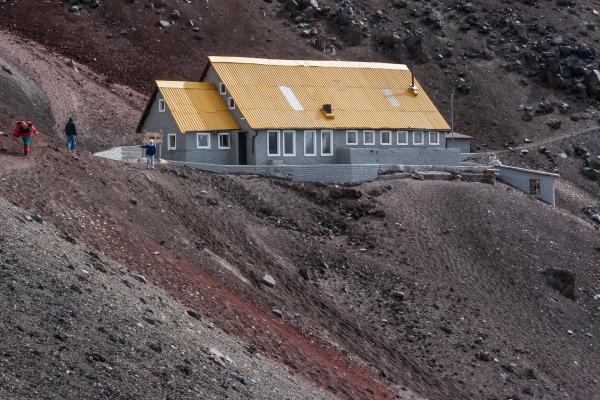
Photo by Brigitte Djajasasmita
The Jose Rivas Refuge is a hostel type accommodation which sleeps 86 people in bunk beds. It is well equipped with 2 kitchens, lockers, a bar, running water and electricity.
Initially there were two routes from the refuge to Cotopaxi summit and typically your guide would choose the best route on the day according to safety. Due to icefall dangers, the original Yanasacha Route was closed in 2013.
Expeditions now take the North Route and, very rarely, the Rompe Corazones Route (aka ‘Heartbreaker’ route).
- Normal Route
The 'Heartbreaker' or 'Rompe Corazones' route is usually only used as an alternative descent.
You begin from the right side of the refuge and make you way diagonally for 2 to 3 hours on steep terrain. Taking a break at this stage is almost impossible, hence the name ‘heartbreaker’. The route then joins the ‘normal route’ after crossing over a deep crevasse at 5,500m.
When Is The Best Time To Climb Cotopaxi?
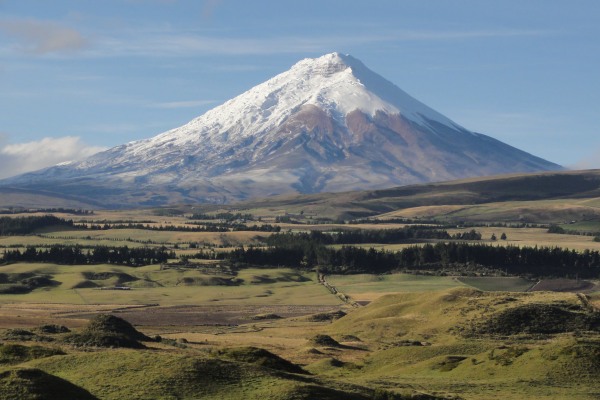
Photo by Dave Lonsdale
Thanks to the great climate conditions in the Cotopaxi area, climbing to the summit can be done at any time of the year. The best months to climb and avoid the wind is during December and January. Otherwise, August to September are also good months to climb but expect to have a lot of wind.
What Is The Typical Itinerary For Climbing Cotopaxi?
A typical Cotopaxi climb takes two days to complete. You begin by heading to the refuge the afternoon before your climb. Once you have settled in you’ll have lessons at a nearby glacier on how to put on your crampons and different ice-axe techniques.
After training, you can grab something to eat and catch a few hours of sleep before your 1am start to the summit. This may depend on your experience level and how long it will take you to summit. The idea is to reach the summit at sunrise and begin your descent before the snow becomes unstable during the daytime. It should take around 5 to 8 hours to reach the summit depending on your pace.
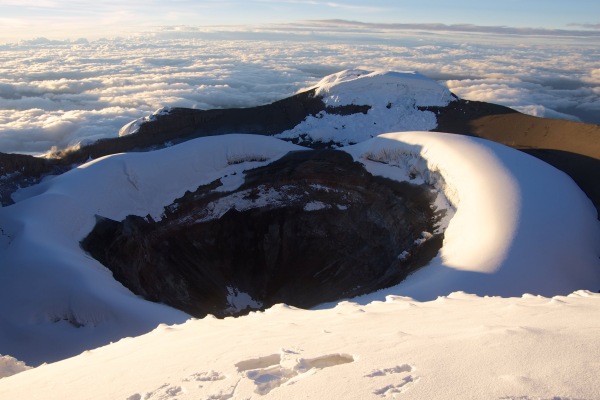
Photo by Robert Nunn
It is strenuous and can get very daunting at times when negotiating deep crevice’s and climbing on thick snow and ice. Some points require you to climb front pointing, meaning you will be climbing using the front spikes on your crampons.
Reaching the summit is exhilarating. Staring down into the deep crater of Cotopaxi volcano and panoramic views of Ecuador’s major peaks is a fantastic reward for a difficult climb. Your descent should take about 3 to 4 hours.
How Difficult Is Climbing Cotopaxi?
Climbing Cotopaxi is possible even with little or no technical mountaineering experience. However, the climb takes 6 hours, is done at high altitude, and you will need to cross huge, deep crevice’s and climb semi-vertical glaciers using special alpine gear. You need strength, stamina and be properly acclimatised.
Reaching the summit of Cotopaxi only has a 72% success rate due to the treacherous sections of the climb and most climbers battle with the high altitude. If you truly want to climb Cotopaxi and reach the summit, then you need to take it seriously and prepare properly.
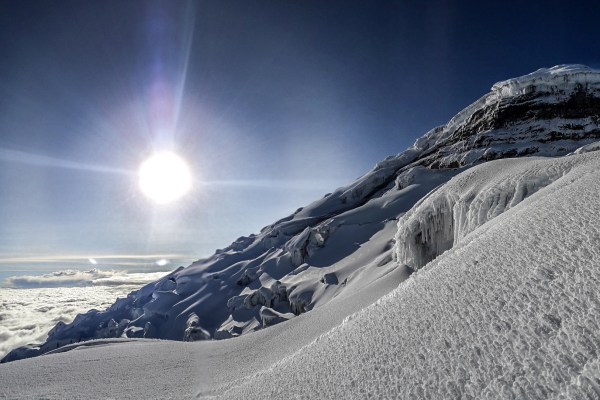
Photo by David Ceballos
Can It Be Done Without A Guide?
You will not be able to climb Cotopaxi without hiring a good, reliable and experienced guide. I highly recommend that you hire a guide who is certified by ASEGUIM (Asociación Ecuatoriana de Guías de Montaña).
Deglaciation is a real concern on the routes and an experienced guide is essential to navigating these sections safely. One guide is only allowed to take two climbers.
How Much Does Climbing Cotopaxi Cost?
Climb Only Packages
- There are a variety of tour companies to book a Cotopaxi climb. They will include most, if not all of the below costs and arrange everything on your behalf. They also have experienced and reliable mountain guides. Packages cost around $450 for 1 person and $300 per person for 2 climbers or more.
Accommodation (Jose Rivas Refuge)
- Bunk bed: $25
- Dinner, bed and breakfast: $35
- Camping: $10
- Food can be quite expensive if brought from the refuge so we suggest bringing your own, but bring some extra cash if you want to eat here or grab a nice warm hot chocolate!
Expert Guide
- $200 - $300 (I highly recommend spending money on this specifically so that you can hire the most experienced and reliable guide who is certified with ASEGUIM)
Transport to park
- $20 (Bus from Quito to park, and car to Cotopaxi parking lot)
Equipment Rental
- $50 per person
Park Fee
- $10 per day (passport required)
Combined Packages
Many tour companies offer a variety of packages which include multi-day hikes, hotels pre and post, and even combine climbing Cotopaxi with a Chimborazo climb. These are of course more expensive but have a lot more on offer.
What Gear Do I Need?
Climbing Cotopaxi requires crampons and an ice-axe. These are your most important pieces of equipment for this climb. Tour operators may provide specialized equipment like crampons, but you are welcome to bring your own or rent equipment.
Essentials
- Ice Axe
Highly important to navigate the steep ice sections of this climb. - Crampons
Make sure these are the right fit for your boots. - Harness with 2 Carabiners
Black Diamond Momentum Harness (Recommended) - Rope
- Trekking Poles / Ski Poles
- Climbing Helmet
Mammut Wall Rider MIPS (Recommended) - Headlamp
Don't forget extra batteries! - Crevasse rescue gear
Equipment
- Sleeping Bag
- Sleeping Pad
Sleeping pad not necessary in the refuge. - Sleeping Bag Liner
Sea to Summit Thermolite Reactor Liner (Recommended) - Facemask
- Gaiters
- Thermos
- Backpack (40 to 50 L)
- Small pack (25 to 30 L)
For your summit climb on day two.
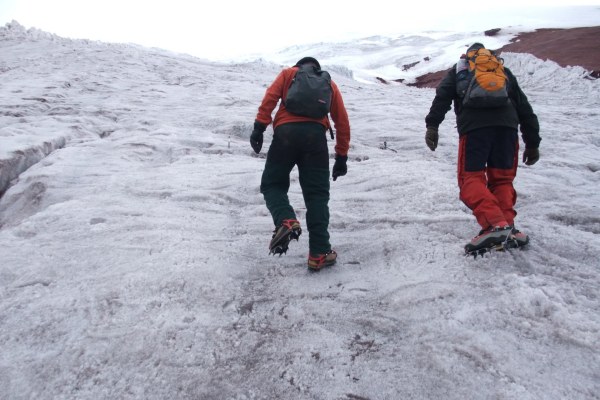
Photo By Ecuador Mountain Guides
Clothing
- Hiking Vest (Base Layers)
- Lightweight Shirts
- Fleece Polar-neck
- Polartec 200 Fleece Jacket
- Windbreaker
- Down Jacket
- Polartec Fleece Bottoms
- Climbing Pants
- Beanie
- Neck gaiter or scarf
- Balaclava
- Cap / Hat
- Mountaineering Gloves
- Hiking Socks
- Mountaineering Boots
- Gaiters
Accessories
- Sunglasses & Sunscreen
- Ear Plugs
- Pocket Knife
- Camera
- Small First Aid Kit
- Heat Pad (Optional)
- Lip balm
- Water Bottle (Insulated)
- Snacks & Meals (Food at the refuge is expensive)
Is Climbing Cotopaxi Dangerous?
Cotopaxi is an active volcano. In 2017, Cotopaxi was reopened following an eruption in 2015. There is a warning system installed throughout the park to alert visitors of any eruptive activity. If you hear the alarm sound continuously, leave the park immediately. Despite it being an active volcano, Cotopaxi is relatively safe to climb and is considered the worlds most monitored volcano!
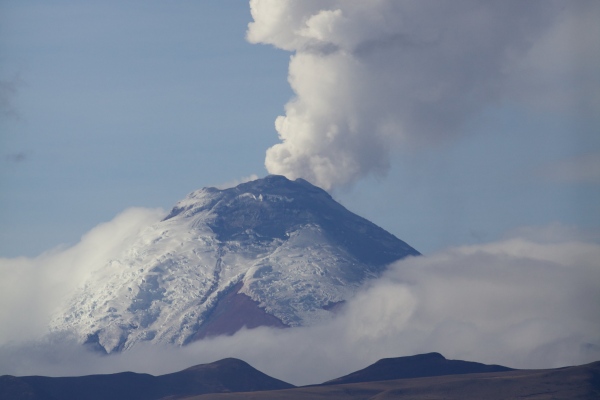
Photo by David Brossard
The altitude can be the downfall of many climbers on Cotopaxi. Only 72% of climbers have a successful summit and many climbers get altitude sickness. Should you feel any effects like headaches or nausea, please do not push yourself, and descend immediately. Altitude sickness should always be taken seriously.
How Can I Prepare For The High Altitude?
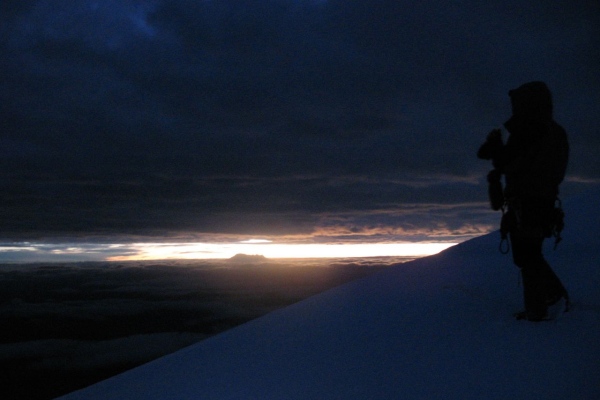
Cotopaxi is 5,897m above sea level and one of the highest active volcanoes in the world. If you are planning a Cotopaxi climb, then you can consider proper acclimatization as highly important.
To have a chance at reaching the summit we recommend spending some time in Quito before attempting Cotopaxi. This will give your body time to adjust to the high altitude.
Training beforehand and hiking a few small peaks prior to Cotopaxi is also recommended to reduce the risk of developing altitude sickness. Good peaks to train on are Volcano Ruminñahui and Sincholahua also in Cotopaxi National Park.
How Do You Get To Cotopaxi?
Cotopaxi volcano is located in the Cotopaxi National Park, which is situated in Cotopaxi province. If you have booked with a tour company then your transport to Cotopaxi National Park may be included in your package, so check this when you book.
Otherwise, you can hop on a bus from Quitumbe Bus Station, but they will drop you about 1 hour from the park entrance. I suggest taking a car and driving the 50km to the national park. There is a detour as you reach kilometer 42 to enter the park so keep this in mind when planning your route.
Do I Need Travel Insurance?
Travel insurance is very important for all climbs at high altitude and you should definitely get insurance if you are planning on climbing Cotopaxi. Make sure your insurance covers high altitude treks or mountaineering specifically above 5,800m and all medical emergencies.
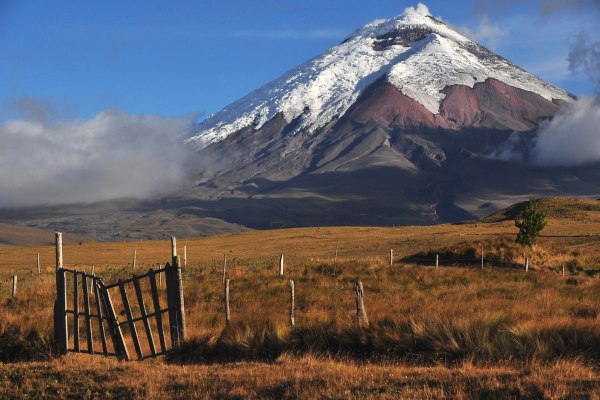
Photo by Rinaldo Wurglitsch
See our detailed guide to South American mountain ranges. Or check out our European country hiking guides below.
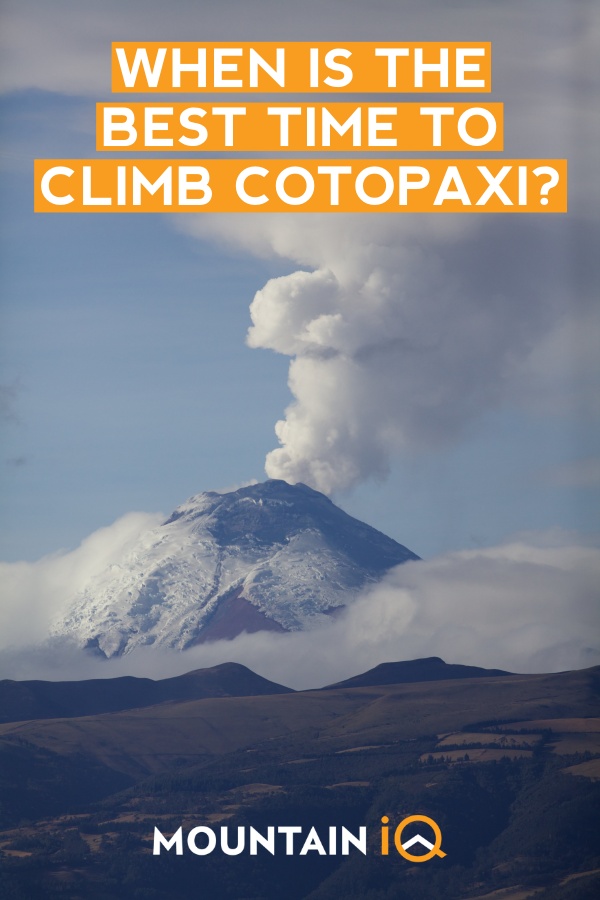

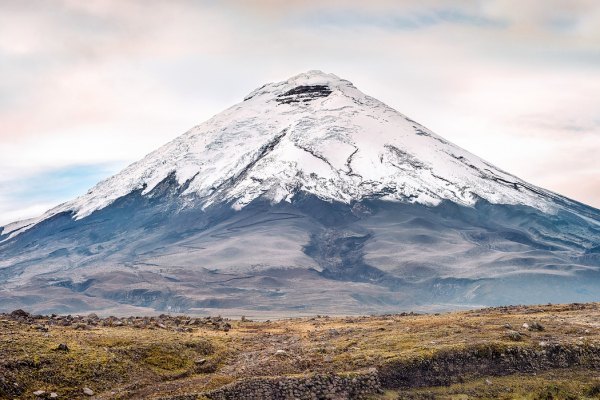
You do realize the volcano is closed to climbing through 2024 don’t you? You do understand that it is in a state of eruption? It’s been closed since before published this article.
Thanks for the update, Josh. This article was originally published in January 2020. The date on the article is an updated date (someone in our network probably added a link or something to the article). We’ve got 1000s of articles so keeping up with all the dynamic changes across the globe is challenging. I’ve updated the article to reflect the current situation on Cotopaxi. Many thanks!